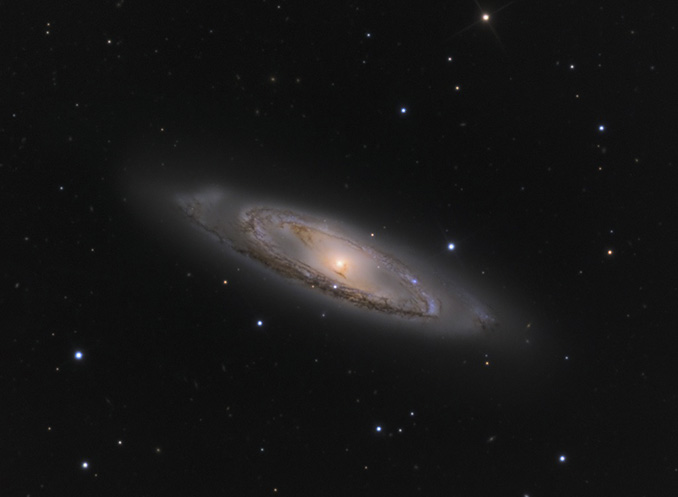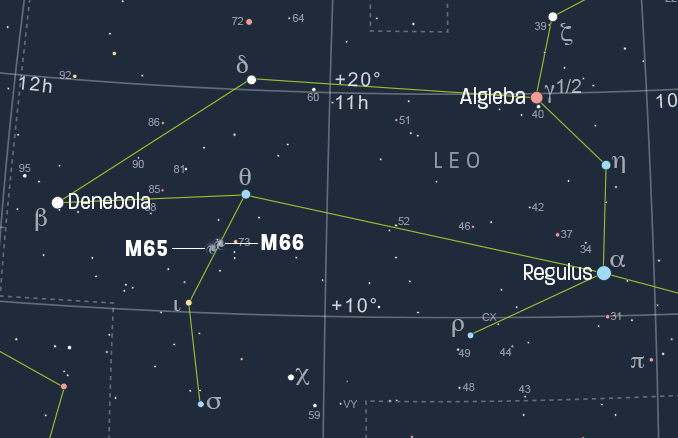
The constellation of Leo, the Lion, is the vanguard of the spring sky; once you’ve spotted Regulus in the evening sky you known spring is here or not too far away. Leo brings with it a pride of superb galaxies, including five of which have Messier bragging rights and one, NGC 2903, which is inexplicably omitted from the great Frenchman’s list.
Although Messier 95 and Messier 96 are both bright and attractive galaxies, most observers rate the more easterly lying pairing of Messier 65 (NGC 3623) and Messier 66 (NGC 3627) as superior. Along with the splendid edge-on galaxy NGC 3628, they form the fabled Leo triplet, or trio.

Messier 66 is the leader of the physically-connected Leo Triplet that lies around 33 million light years away. Shining at magnitude +9, it’s marginally brighter than Messier 65 (+9.3) and spans 8.7’ x 4.4’. Messier 66 is a spiral galaxy that under the Hubble–deVaucouleurs system is classified SAB(s)b) and appears face-on to our line of sight. It looks peculiar, with asymmetric spiral arms and a displaced core or nucleus probably caused by past encounters with its companion galaxies. Whatever its turbulent history, Messier 66 is a very attractive galaxy, its spiral arms exhibiting striking dust lanes and doted with pinky-red H-II regions and bright star clusters.
Messier 65 is also a spiral galaxy with tightly-wound spiral arms, classed SAB(rs)a, and lies 20 arcminutes to the west-northwest of Messier 66. It shines at magnitude +9,3 and has a more edge-on appearance in the sky than Messier 66, covering 10’ x 3.3’. Deep images reveal it has bright central bulge and a smooth disc transected by a photogenic dust lane running the length of its major axis.

Messier 66’s spiral arms show an overall mottled appearance through a 150–200mm (six- to eight-inch) telescope, though a 250–300mm (10- to 12-inch) ‘scope on a particularly fine may be able to trace the arms and dust lanes. You’ll definitely want to observe Messier 65 through the larger aperture.


